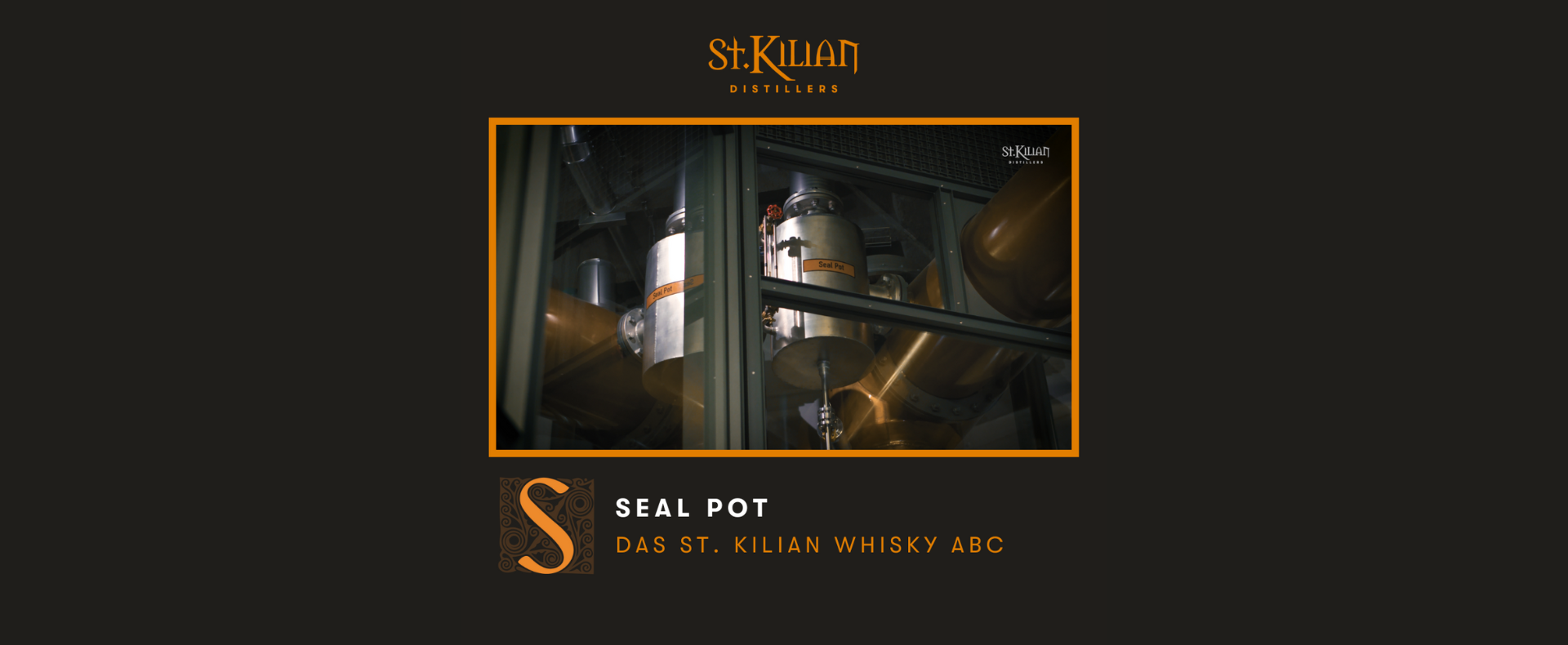S - like Seal Pot

What is a Seal Pot?
A seal pot is a special stainless steel container attached directly to the Lyne arm between the still (pot still) and the condenser.
What is a Seal Pot needed for?
With the help of the seal pot, a possible pressure difference (overpressure and underpressure) in the distillation unit is compensated mechanically. This is a very important safety function.
How is a seal pot constructed?
The Seal Pot consists of a simply constructed stainless steel vessel with a constructively defined water seal inside. The water is filled into the vessel from below until it overflows into the Lyne Arm via the connection. Then the target water level in the Seal Pot is reached and indicates the normal pressure, so to speak.
Why does the pressure in the still have to be measured?
Pot still stills are made of sturdy, but only a few millimeters thin copper plate. A still of this type cannot withstand overpressure and even less can it withstand negative pressure or vacuum. At overpressure, the pot still would burst in the worst case; at vacuum, it would be compressed like a can.
Why do pressure differences occur in the first place?
There are process-related circumstances that can lead to higher or lower pressures in the still. Even the weather conditions - high or low pressure - have a fundamental influence on the pressure conditions. A slight blockage or clogging in the condenser or downstream subcooler during distillation operation can lead to increased pressure in the still. A sudden drop in steam due to a technical malfunction of the quick steam generator, on the other hand, can be the cause of a possible underpressure in the pot still.
How does a seal pot work?
In the event of overpressure in the still, the water in the Seal Pot is forced up through a pipe, which is also located inside the vessel and runs vertically upwards to above the roof of the production building. In this way, the pressure can escape and, in the maximum case, would push the water completely out of the tube. On the other hand, in the case of a negative pressure or vacuum, the water is drawn from the Seal Pot into the still via the Lyne Arm until the stainless steel vessel is empty. In both cases, there is complete pressure equalization with the outside air, thus preventing damage to the distillation equipment.
What are the maximum values for positive and negative pressure at St. Kilian?
The height of the water column determines how much overpressure or underpressure the still can withstand. During the planning phase of the St. Kilian distillery, a maximum overpressure of +190 mbar (+0.19 bar) and a maximum underpressure of -20 mbar (-0.02 bar) were calculated on the basis of the existing technical drawing. This means that the water level, which has to be constantly checked, already reacts at these extremely low values. A very sensitive safeguarding system, in other words - simple, but highly effective.
How many Seal Pots has St. Kilian installed?
In the stillhouse of St. Kilian Distillers there are two copper stills, the wash and the spirit still. Therefore, a total of two seal pots, one per still, are installed on the respective slightly ascending Lyne Arm.
Are there any other pressure safeguards beyond that?
In production locations such as Scotland and other countries, the seal pots are a completely adequate technique for protecting the stills. In Germany, further technical measures are also required. For example, St. Kilian Distillers has additionally installed highly sensitive measuring technology from Siemens for each pot still. These electronic instruments measure possible overpressure or underpressure. If the permissible pressure is exceeded or fallen short of, the steam for distillation in the pot stills is automatically switched off (keyword: hardware interlock).